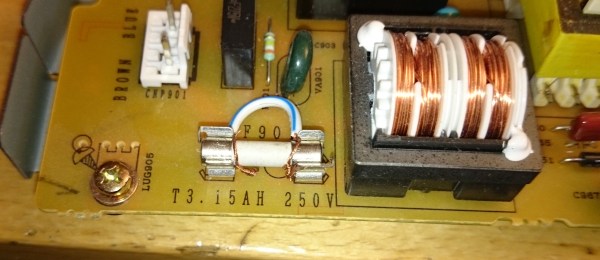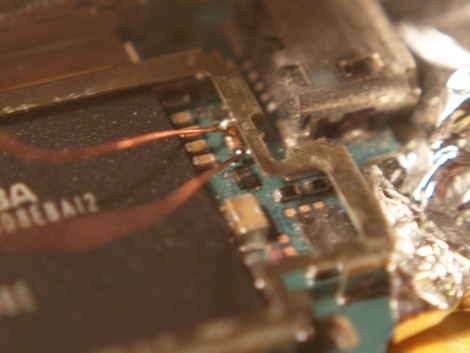[Tomas] at Umeå Hackerspace in Sweden had some broken audio equipment, including a Sharp CD player/amplifier. What went wrong when he tried to fix it is a fail story from which we can all learn.
The device worked – for about a second after being turned on, before turning itself off. That’s a hopeful sign, time to start debugging. He took the small-signal and logic boards out of the circuit, leaving only power supply and amplifier, and applied the juice.
Magic blue smoke ensued, coming from the amplifier. Lacking a suitable replacement part, that was it for the Sharp.
On closer inspection it emerged that the previous owner had bypassed the power supply fuse with a piece of copper wire, Evidently they had found the fuse to be blowing too often and instead of trying to fix the problem simply shot the messenger.
We have all probably done it at some time or other. In the absence of a replacement fuse we may have guestimated the number of single strands required to take the current, or used a thin strip of foil wrapped around the fuse body. And we’ll all have laughed at that meme about using a spanner or a live round as a fuse.
So if there’s a moral to this story, it’s to always assume that everyone else is as capable as you are of doing such a dodgy fix, and to always check the fuse.
 Fail of the Week is a Hackaday column which celebrates failure as a learning tool. Help keep the fun rolling by writing about your own failures and sending us a link to the story — or sending in links to fail write ups you find in your Internet travels.
Fail of the Week is a Hackaday column which celebrates failure as a learning tool. Help keep the fun rolling by writing about your own failures and sending us a link to the story — or sending in links to fail write ups you find in your Internet travels.

















